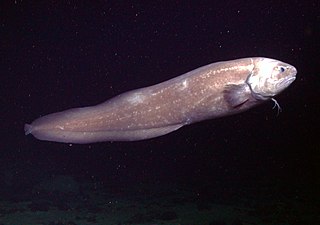
The cusk-eel family, Ophidiidae, is a group of marine bony fishes in the Ophidiiformes order. The scientific name is from the Greek ophis meaning "snake", and refers to their eel-like appearance. True eels diverged from other ray-finned fish during the Jurassic, while cusk-eels are part of the Percomorpha clade, along with tuna, perch, seahorses and others.
Casierius is an extinct genus of marine ray-finned fish that lived during the Albian stage of the Early Cretaceous epoch. It was a relative of the modern bonefish in the extinct family Phyllodontidae, although some authorities consider it either a true albulid or a very early eel. It contains a single species, C. heckeli, known from the Glen Rose Formation near Hood County, Texas.
Tachynectes is an extinct genus of prehistoric ray-finned fish that lived from the Turonian to the Campanian.

Pteronisculus is an extinct genus of prehistoric ray-finned fish that lived during the Early Triassic and Middle Triassic epochs of the Triassic period worldwide.
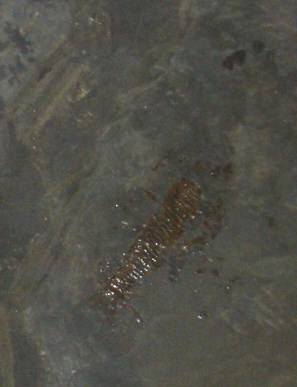
Habroichthys is an extinct genus of prehistoric bony fish that lived during the early Ladinian stage of the Middle Triassic epoch, 242 to 232 million years ago. It has been found in Austria, China, Italy, Slovenia, and Switzerland. It was a small fish measuring 26 cm (10 in) long.
Scanilepis is an extinct genus of prehistoric bony fish that lived during the Rhaetian-?Hettangian ages. The type species, S. dubia, is known from the Rhaetian freshwater deposits of the Bjuv member of the Höganäs Formation, southwestern Sweden. A second species, S. spitzbergensis was mentioned from the Hettangian of the Festning section of the Grøfjorden area in Spitsbergen, Norway but was never described.

Boreosomus is an extinct genus of Triassic marine ray-finned fish. It was first described from the Arctic island of Spitsbergen, hence its genus name, but was later also discovered in other parts of the world. The type species is Boreosomus arcticus.
Brouweria is an extinct genus of prehistoric marine ray-finned fish related to the modern tarpon. It was named by L.F. de Beaufort (1926) and assigned the family "Elopsidae", though later studies have placed it in the family Megalopidae. It was discovered by geologist Hendrik Albertus Brouwer after rock had been exploded to construct a road, from Miocene rocks near Putanuang Asue.

Davichthys is an extinct genus of prehistoric marine ray-finned fish related to modern ladyfish. It is known from the Late Cretaceous of southern Europe, the Middle East, and North Africa. It is one of the earliest known elopids.
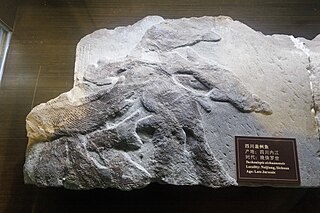
Yuchoulepis is an extinct genus of prehistoric ray-finned fish.

Thaumaturus is an extinct genus of prehistoric ray-finned fish.
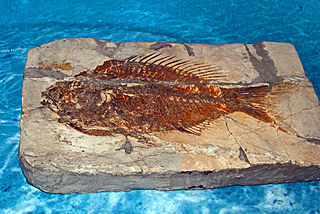
Sparnodus is an extinct genus of prehistoric perciform fish in the family Sparidae. Species of this genus were nektonic carnivores. These fishes lived in the Cenozoic Era, in the Oligocene and Paleocene.
Seefeldia is an extinct genus of prehistoric ray-finned fish.

Gyrolepis is an extinct genus of prehistoric ray-finned fish from the Middle-Late Triassic epochs in what is now Europe. It is known both from complete specimens and isolated skeletal elements, such as scales or teeth.
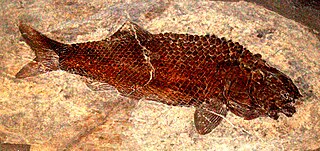
Heterolepidotus is an extinct genus of prehistoric ray-finned fish.

Ptycholepis is an extinct genus of prehistoric ray-finned fish having the head and opercular bones ornamented with ridges of ganoin, minute teeth, and thick scales.

Phareodus is a genus of freshwater fish from the Paleocene to the Eocene of Australia, Europe and North and South America.

The piper gurnard, also known as the piper or the lyre gurnard, is a species of marine, demersal ray-finned fish from the family Triglidae, the gurnards and sea robins. It is found in the eastern Atlantic Ocean and the Mediterranean Sea. It is the only species in the monotypic genus Trigla.

Tarasiiformes is an extinct order of prehistoric ray-finned fish.

Dorypterus is a small, extinct genus of prehistoric ray-finned bony fish. It lived during the Wuchiapingian stage of the late Permian epoch in what is now Germany (Kupferschiefer) and England. It is a hypsisomatic bobasatraniiform with a high dorsal fin. Due to anatomical differences with other bobasatraniiforms, such as the presence of pelvic fins and the reduced scale cover, Dorypterus is placed in its own monotypic family, Dorypteridae.













